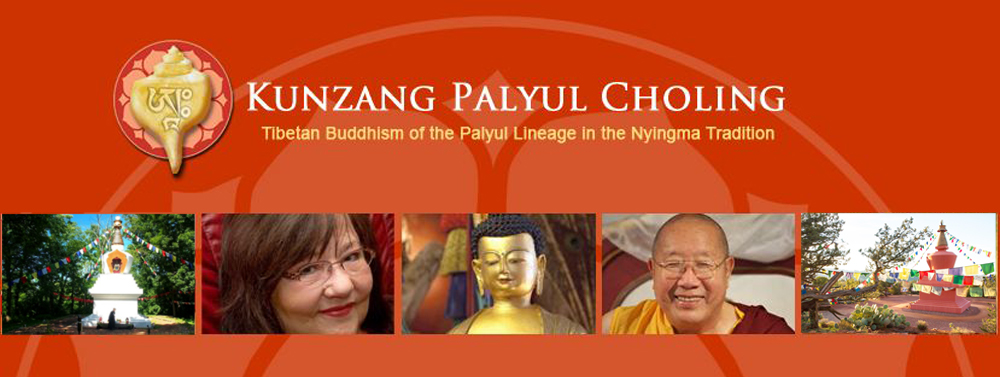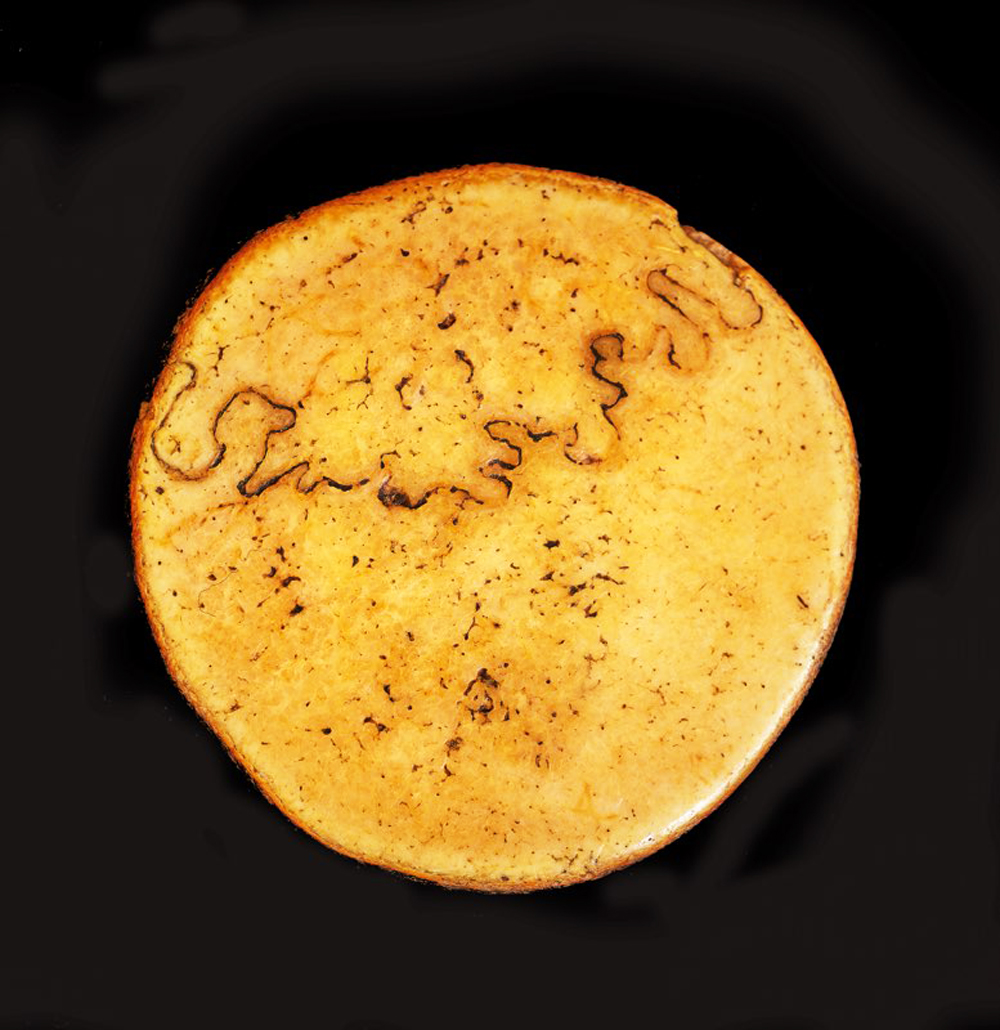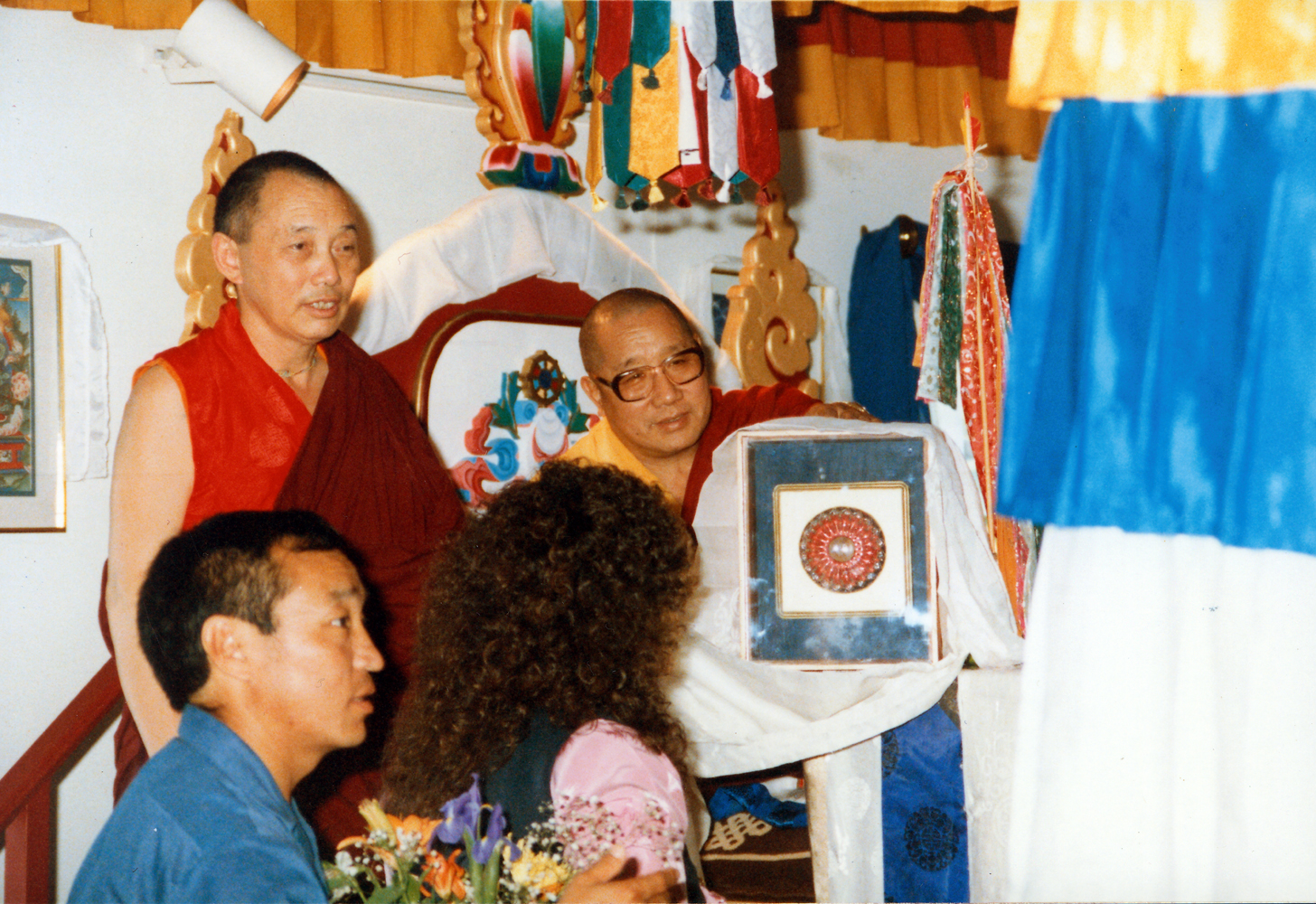
A Treasured Relic in the KPC Prayer Room


Palyul Monastery, founded in 1665, is one of the six “mother monasteries” of the Nyingma Buddhist tradition in Tibet. Palyul’s first throneholder was named Rigdzin Kunzang Sherab. His sister, Genyenma Ahkon Lhamo, spent most of her life in meditation retreat in a cave high above Palyul Monastery, and was revered as an emanated primordial wisdom Dakini.
After her death, Ahkon Lhamo’s body was cremated in a grand public prayer ceremony that is conducted for high lamas’ passage. At the height of the ceremony, her kapala, or top part of her skull, rose out of the fire, higher and higher, until it disappeared into space. Everyone saw this, and it caused great wonder. But everyone was even more astonished when they returned to the monastery, about three kilometers away. There they found the kapala, still warm from the fire, resting at the foot of her brother’s throne in the main temple. Upon inspection, it was discovered that the inside displayed miraculously produced images of Buddhas, Dakinis, and mantras, including the sacred syllable “AH” at the very crown. This syllable represents realization of the ultimate truth of the empty nature of self and phenomena. The Ahkon Lhamo kapala became the most sacred relic at Palyul Monastery, only used in the most powerful rituals.
When the Communist invasion happened in 1950, His Holiness Penor Rinpoche, the current 11th Throneholder of Palyul, was forced to flee to India in 1959. In the need to travel lightly, he was not able to bring Ahkon Lhamo’s kapala.
Later, during the Chinese Cultural Revolution, the people of the Palyul area were forced to destroy Palyul Monastery. Tragically, most of the kapala was smashed into dust. One piece remained intact, however – the crown piece bearing the syllable “AH”. A Tibetan man present at the scene understood what it was, and when no one was looking, quietly hid it away inside his clothing.
This man wore the relic in an amulet on his body for the next 20 years. Then, in 1987, just after Penor Rinpoche had formally recognized an American woman named Alyce Zeoli as the tulku, or reincarnation, of Ahkon Lhamo, His Holiness was able to return to Palyul in Tibet. There, the man who was able to save the last piece of Ahkon Lhamo’s kapala relic approached him and related the whole story. Penor Rinpoche rejoiced and asked if the man would please give the relic to him. He said that Ahkon Lhamo’s incarnation had been reborn in America and the following year he intended to travel there to conduct the enthronement ceremony for her. He felt that this relic would be a most auspicious gift. Though the man was heartbroken to lose this treasure, of course he gave it to Penor Rinpoche.

Bottom L to top R: Kunzang Lama, Jetsunma Ahkon Lhamo, Ven. Gyatrul Rinpoche, H.H. Penor Rinpoche
The next year, 1988, Penor Rinpoche presented the kapala relic, which he had preserved in a crystal lotus, to Jetsunma Ahkon Lhamo (her new name) upon the occasion of her enthronement. At that time he related to Jetsunma and her students that as a young tulku at Palyul Monastery, he had held the full kapala at major prayer events. He said that even as a child in Tibet he used to make aspirational prayers that if the reincarnation of this accomplished practitioner who could produce such miracles was in the world again, that he might be the one to find her. And so it happened.
The Ahkon Lhamo kapala relic has been enshrined on the Three Kaya altar here at Kunzang Palyul Choling since Penor Rinpoche bestowed it in 1988. This precious relic indicates the highest realization of complete mastery over phenomena. It is displayed to the public for viewing and devotion only on the most sacred days of the Buddhist calendar and for special teaching events conferred by Jetsunma Ahkon Lhamo, KPC’s Spiritual Director and the current incarnation of this great master of the Palyul lineage.



